|
LEAVING NORTHERN GALILEE
Yeshua spent a brief time in the region of Tyre and
Sidon, where He performed further healings and made it
clear that His main mission was to the house of Israel
(Matthew 15:21-28). He then moved on to Caesarea
Philippi; this was the turning point of His Ministry
(16:13-20; Mark 8:27-38; Luke 9:18-27). It was there
that Yeshua asked His disciples:
“Who do people say the Son of Man is?” This caused Peter
to confess:
“You are HaMashiach, the Son of the living YHVH.” This
impressive confession led Yeshua to promise that He
would build His church on “this rock.” There has been
much discussion about the meaning of this saying.
It is open to some doubt whether Yeshua intended to
build His church on Peter, on his confession or on
Peter’s making the confession.
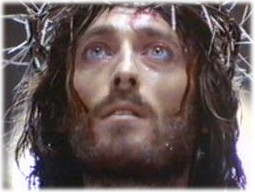 Historically,
Peter was the instrument YHVH used for the entrance into
the Church of both Jews and Gentiles (Acts 2; 10). There
is no doubt about Yeshua’s intention to found a Church,
since the word occurs again in Matthew 18:17. Despite
the glorious revelation of Yeshua on this occasion, He
took it as an opportunity to begin to inform His
disciples of His death and resurrection (16:21-23). This
revelation of Yeshua was considerably reinforced by the
event known as the Transfiguration, when Yeshua was
changed in appearance in the presence of three of His
disciples (Matthew 17:1-8). It was natural for them to
want to keep this glorious vision of Yeshua for
themselves, but the vision vanished as rapidly as it
came. Its purpose was evidently to show the three
leading disciples something of the nature of Yeshua,
which was hidden by His normal human form. A further
feature of the vision was the appearance with Yeshua of
Moses and Elijah, representatives of the Law and the
Prophets. After the Transfiguration, Yeshua made two
predictions concerning His death. These announcements
were confusing to the disciples. In Matthew 16, when
Yeshua mentioned His death, Peter attempted to rebuke
Yeshua and was rebuked by Yeshua in kind. Historically,
Peter was the instrument YHVH used for the entrance into
the Church of both Jews and Gentiles (Acts 2; 10). There
is no doubt about Yeshua’s intention to found a Church,
since the word occurs again in Matthew 18:17. Despite
the glorious revelation of Yeshua on this occasion, He
took it as an opportunity to begin to inform His
disciples of His death and resurrection (16:21-23). This
revelation of Yeshua was considerably reinforced by the
event known as the Transfiguration, when Yeshua was
changed in appearance in the presence of three of His
disciples (Matthew 17:1-8). It was natural for them to
want to keep this glorious vision of Yeshua for
themselves, but the vision vanished as rapidly as it
came. Its purpose was evidently to show the three
leading disciples something of the nature of Yeshua,
which was hidden by His normal human form. A further
feature of the vision was the appearance with Yeshua of
Moses and Elijah, representatives of the Law and the
Prophets. After the Transfiguration, Yeshua made two
predictions concerning His death. These announcements
were confusing to the disciples. In Matthew 16, when
Yeshua mentioned His death, Peter attempted to rebuke
Yeshua and was rebuked by Yeshua in kind.
When Yeshua mentioned His death again in Matthew 17,
Matthew noted that the disciples were greatly distressed
(17:23), while Mark and Luke mentioned the disciples’
lack of understanding (Mark 9:32; Luke 9:45).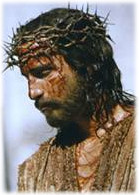
Yeshua was approaching the cross with no support from
those closest to Him. It is not surprising that when the
hour arrived they all betrayed Him. After the
Transfiguration revealed that Yeshua was greater than
Moses and Elijah and in fact was the beloved Son of YHVH,
He was asked to pay the temple tax (Matthew 17:24-27).
This incident illustrates the attitude of Yeshua toward
the authorities and practical responsibilities. He paid
the tax, although He did not acknowledge any obligation
to do so. The method of payment was extraordinary, for
it involved the miracle of the coin in the fish. But the
greater importance of the incident is Yeshua’s
independence from the Jewish law. Luke devotes more than
half his Gospel to the period that begins with Yeshua
leaving Galilee and ends with His death and resurrection
in Jerusalem.
In
this section of his Gospel, Luke introduces a great deal
of material that does not occur elsewhere. We can do no
more than summarize some of the more striking items that
throw light on the life of Yeshua. In addition to the
mission of the Twelve, Luke records the mission of the
Seventy (or Seventy-two; see Luke 10:17-20). Luke
records special parables in this section like the Good
Samaritan (10:29-37), the lost sheep (15:3-7), the lost
coin (15:8-10) and the prodigal son (15:11-32).
As Yeshua moved toward Jerusalem, He was concerned with
developing the spiritual life of His disciples. He was
mindful of the fact that He would not be with them long
and wished to prepare them for the future.
He taught them about prayer (11:1-13), the Father’s care
for them (12:13-34) and preparation for the coming of
the Son of Man (12:35-56).
ON THE WAY TO JERUSALEM
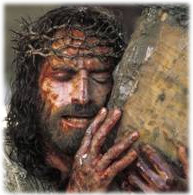 On the approach to Jerusalem, Yeshua visited both
Jericho and Bethany. On the approach to Jerusalem, Yeshua visited both
Jericho and Bethany.
At Jericho he healed Bartimaeus (Luke 18:35-43) and had
a fruitful encounter with Zacchaeus, who reformed his
ways as a tax collector (19:1-10). Bethany was the home
of Mary, Martha and their brother Lazarus, whom Yeshua
had raised from the dead (John 11). Yeshua spent His
remaining days in Jerusalem but returned each night to
stay at Simon the Leper’s house in Bethany in the
presence of those who loved Him (Matthew 26:6). It was
there that a woman anointed His Body with costly
ointment. This was a controversial and prophetic act
preparing Yeshua for His burial (26:6-13).
THE FINAL DAYS IN JERUSALEM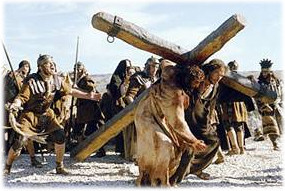
All four Gospels relate the entry of Yeshua into
Jerusalem (Matthew 21:1-11; Mark 11:1-10; Luke 19:29-38;
John 12:12-15). At this time, crowds greeted Yeshua and
praised Him as their king. This welcome stands in stark
contrast with the crowd’s later cry for His death. In
fact, it was the second crowd that was doing YHVH’s
bidding, since Yeshua had not come to Jerusalem to reign
but to die. The synoptic Gospels place the cleansing of
the temple as the first main event following Yeshua’s
entry into the city (Matthew 21:12-13; Mark 11:15-17;
Luke 19:45-46). The clouds of opposition had been
thickening, but the audacity of Yeshua in clearing out
the moneychangers from the temple area was too much for
the authorities (Mark 11:18; Luke 19:47). The
crucifixion loomed closer.
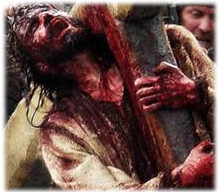 Further controversies developed between Yeshua and the
Pharisees and Sadducees (Matthew 21:23-22:45). In
several cases, trick questions were posed in order to
trap Yeshua, but with consummate skill He turned their
questions against them. The opposition eventually
reached the point where they dared not ask Him any more
questions (22:46). Nearing His final hour, Yeshua took
the opportunity to instruct His disciples about future
events, especially the end of the world. He reiterated
the certainty of His return and mentioned various signs
that would precede that coming (Matthew 24-25; Mark 13;
Luke 21). The purpose of this teaching was to provide a
challenge to the disciples to be watchful (Matthew
25:13) and diligent (25:14-30). Further controversies developed between Yeshua and the
Pharisees and Sadducees (Matthew 21:23-22:45). In
several cases, trick questions were posed in order to
trap Yeshua, but with consummate skill He turned their
questions against them. The opposition eventually
reached the point where they dared not ask Him any more
questions (22:46). Nearing His final hour, Yeshua took
the opportunity to instruct His disciples about future
events, especially the end of the world. He reiterated
the certainty of His return and mentioned various signs
that would precede that coming (Matthew 24-25; Mark 13;
Luke 21). The purpose of this teaching was to provide a
challenge to the disciples to be watchful (Matthew
25:13) and diligent (25:14-30).
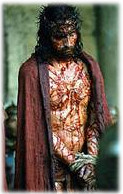
This
section prepares the way for the events of the arrest,
the trial, the scourging and crucifixion that followed
soon after. But first we must note the importance of the
Lord’s Supper. When Yeshua sat at the table with His
disciples on the night before He died, He wished to give
them a picture of His death’s significance (Matthew
26:26-30; Mark 14:22-25; Luke22:19-20; 1 Corinthians
11:23-26). The use of the bread and wine for this
purpose was a happy choice because they were basic
elements in everyday life. Through this symbolic
significance Yeshua gave an interpretation of His
approaching death; His Body broken and His blood poured
out for others. It was necessary for Yeshua to provide
this reminder that His sacrificial death would seal a
completely New Covenant. Each time we celebrate
communion, we help prevent the Church from losing sight
of the centrality of the cross. John’s Gospel does not
tell the story of the Last Supper. Nevertheless, it does
record a significant act in which Yeshua washed the feet
of the disciples as an example of humility (John
13:1-20). He impressed on the disciples the principle of
service to others. John follows this display of humility
with a series of teachings Yeshua gave on the eve of the
Passion (chapters 14-16). The most important feature of
this teaching was the promise of the coming of the Ruach
HaKodesh to the disciples after Yeshua had gone. Even
with His mind occupied by thoughts of approaching death,
Yeshua showed Himself more concerned about His disciples
than about Himself. This is evident in the prayer of
Yeshua in John 17. All the Gospel writers refer in
advance to the betrayal by Judas (Matthew 26:21-25; Mark
14:18-21; Luke 22:21-23; John 13:21-30), which prepares
readers for the final stages of Jesus journey to the
cross.
THE BETRAYAL AND ARREST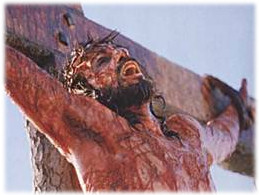
The various outbursts of popular support were soon over
and the determined opposition seemed to resume control.
In John’s Gospel, the sense of approaching climax is
expressed in terms of “His hour” (John 13:1). When this
at length comes, the betrayal and arrest are seen as
part of a larger plan. From the upper room where the
Last Supper was eaten, Yeshua went straight to the
Garden of Gethsemane (Matthew 26:36-46; Mark 14:32-42;
Luke 22:40-46), where He prayed to His Father with deep
intensity and agony. It cost Yeshua to identify Himself
with man’s need. He prayed for the cup of suffering to
pass from Him, but at the same time He submitted to the
Father’s will. The three disciples He took with Him all
fell asleep, while one of His other disciples, having
betrayed his master, appeared at the gates at the head
of the group who had come to arrest Him. At the moment
of confrontation with Judas, Yeshua exhibited an amazing
dignity when He addressed the betrayer as His “friend”
(Matthew 26:50). He offered no resistance when He was
arrested and chided the crowd of people for their swords
and clubs (26:55).
THE TRIAL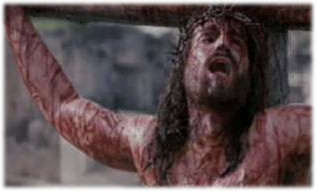
Yeshua was first taken to the house of Annas, one of the
high priests, for a preliminary examination (John
18:13). During His trial, He was scorned by His enemies
and one of His disciples Peter, denied Him three times
(Matthew 26:69-75, Mark 14:66-72; Luke 22:54-62; John
18:15-27), as Yeshua predicted he would (Matthew 26:34;
Mark 14:30; John 13:38).
The official trial before the Sanhedrin was presided
over by Caiaphas, who was puzzled when Yeshua at first
refused to speak. At length Yeshua predicted that the
Son of Man would come on the clouds of heaven; this was
enough to make the high priest charge Him with blasphemy
(Mark 14:62-64). Although He was spat upon and His face
was struck, Yeshua remained calm and dignified. He
showed how much greater He was than those who were
treating Him with contempt. The further examinations
before Pilate (Matthew 27:1-2; Mark 15:1; Luke 23:1;
John 18:28) and Herod (Luke 23:7-12) were more examples
of injustice. Again Yeshua did not answer when asked
about the charges before either Pilate (Matthew 27:14)
or Herod (Luke 23:9). He remained majestically silent,
except to make a comment to Pilate about the true nature
of His Kingship (John 18:33-38). The pathetic governor
declared Yeshua innocent, offered the crowds the release
of either Yeshua or Barabbas and then publicly
disclaimed responsibility by washing his hands. Pilate
then had Yeshua scourged and handed Him over to be
crucified.
THE CRUCIFIXION
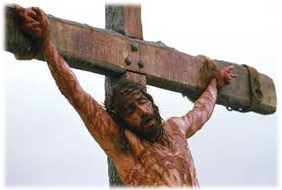 The
soldiers’ mocked Yeshua (Matthew 27:27-30), mixing a
royal robe with a painful crown of thorns (Mark 15:17)
and compelling a passerby to carry the cross (Luke
23:26). They then nailed Yeshua to the cross and played
a cruel game, casting lots for His garment (John
19:23-24). They scornfully challenged Him to use His
power to escape (Matthew 27:40-44). The
soldiers’ mocked Yeshua (Matthew 27:27-30), mixing a
royal robe with a painful crown of thorns (Mark 15:17)
and compelling a passerby to carry the cross (Luke
23:26). They then nailed Yeshua to the cross and played
a cruel game, casting lots for His garment (John
19:23-24). They scornfully challenged Him to use His
power to escape (Matthew 27:40-44).
But against this is Yeshua’s concern about the repentant
criminal who was crucified with Him (Luke 23:39-43). He
also expressed concern for His mother (John 19:25-27),
prayed for forgiveness for those responsible for the
Crucifixion (Luke 23:34) and made one final triumphant
cry (Mark 15:37). He showed a nobility of mind that
contrasted strongly with the meanness of those about
Him. A few observers showed a better appreciation, like
the centurion who was convinced of Yeshua’s innocence
(15:39) and the women who followed Him and stood at a
distance (Matthew 27:55-56). At Yeshua’s forsaken cry
(Mark 15:34), there was darkness and an earthquake, as
if nature itself were acknowledging the significance of
the event. Even the temple veil was torn in two, as
though it no longer had any right to bar the way into
the Holy of Holies (Matthew 27:51). Yeshua’s death had
paved the way for all people to freely enter YHVH’s
presence and worship Him. He paid for our sins and
brought us back to YHVH.
THE BURIAL, RESURRECTION AND ASCENSION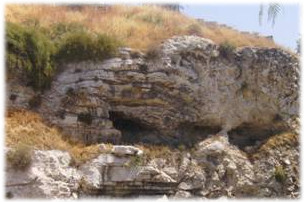
Yeshua’s Body was placed in a tomb that belonged to
Joseph of Arimathea.
Joseph was assisted by Nicodemus in laying the Body to
rest (Matthew 27:57-60; John 19:39). But the tomb played
only an incidental part in the resurrection. The Gospel
writers concentrate on the appearances of Yeshua not
only on the day of resurrection but also afterward. The
disciples were convinced that Yeshua was alive. Some
like Thomas, had doubts to overcome (John 20:24-29).
Others like John, were more ready to believe when they
saw the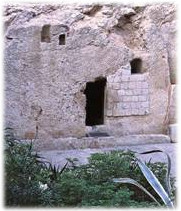 empty tomb (20:2-10). The
first to see the risen
Lord was a woman, Mary Magdalene (Matthew
27:61; Matthew
28:1, 5-9), whose presence at the cross put to shame
those disciples who had run away (Matthew 26:56; John
19:25). We may note that in His glorified, risen state Yeshua was in a human form, although He was not at once
recognized (John 20:15-16). The appearances were
occasions of both joy and instruction (compare to Luke
24:44 and Acts 1:3). The Resurrection in fact, had
transformed the
empty tomb (20:2-10). The
first to see the risen
Lord was a woman, Mary Magdalene (Matthew
27:61; Matthew
28:1, 5-9), whose presence at the cross put to shame
those disciples who had run away (Matthew 26:56; John
19:25). We may note that in His glorified, risen state Yeshua was in a human form, although He was not at once
recognized (John 20:15-16). The appearances were
occasions of both joy and instruction (compare to Luke
24:44 and Acts 1:3). The Resurrection in fact, had
transformed the
Crucifixion from a tragedy into a triumph. His Ascension
into heaven came forty days after His resurrection.
Yeshua ascended into heaven to join His Father in glory
(Luke 24:51; John 20:17; Acts 1:9-11).
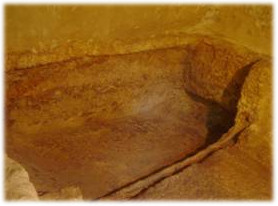 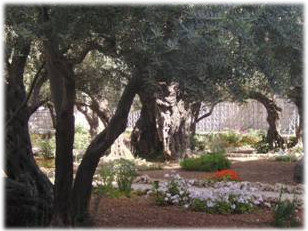
|